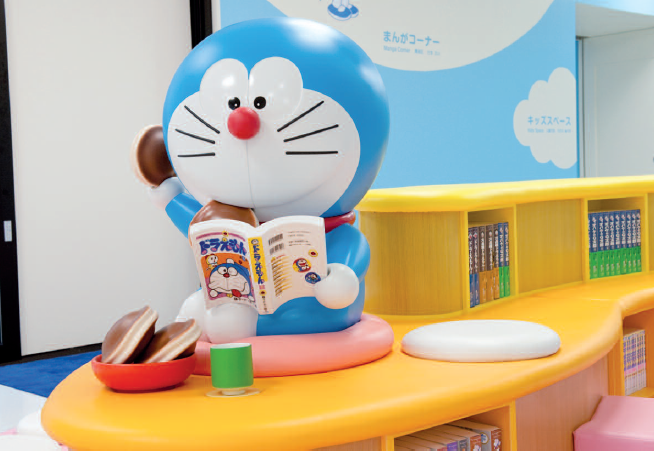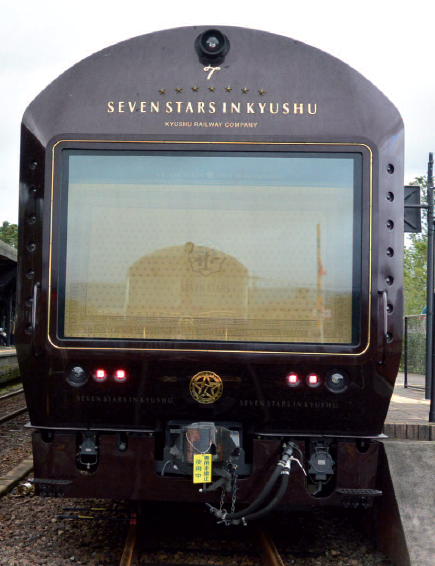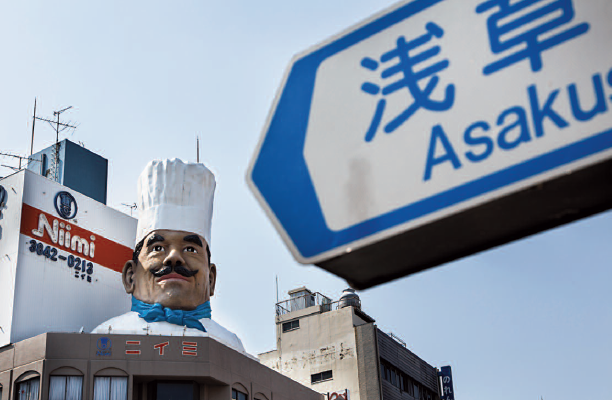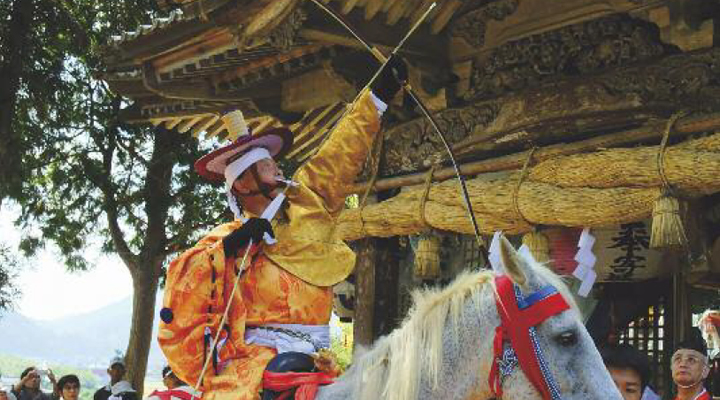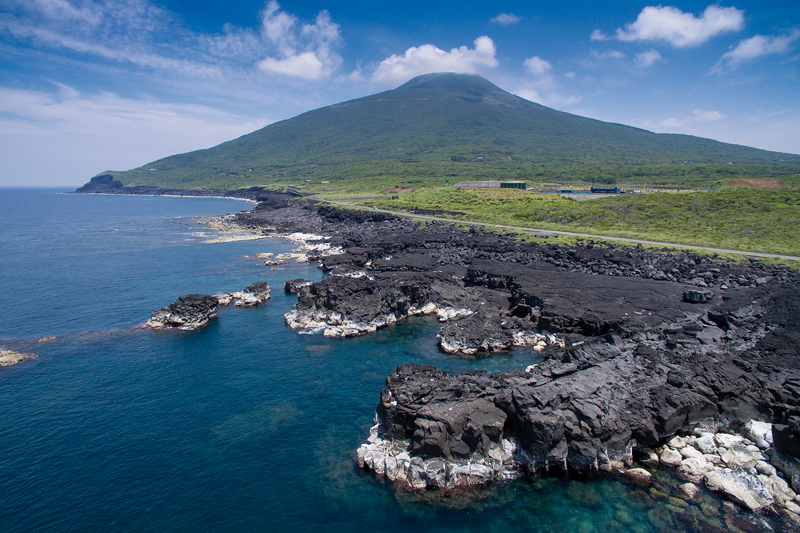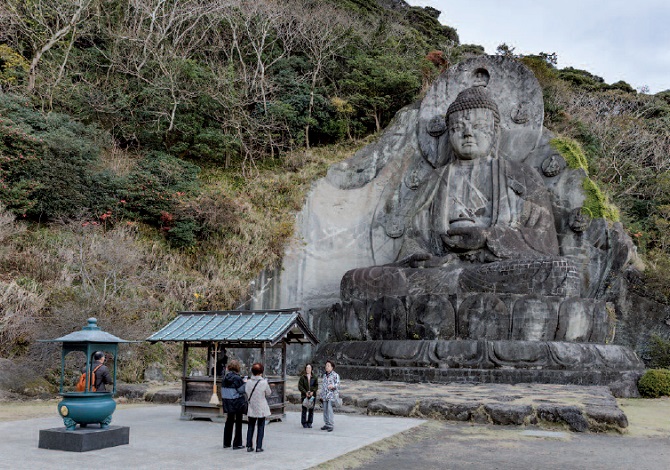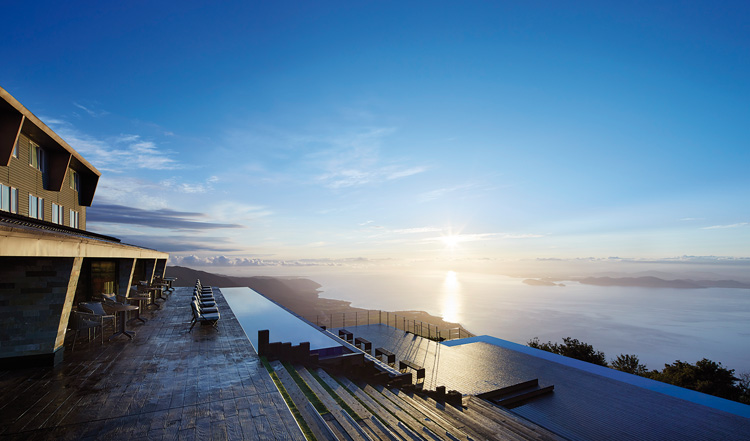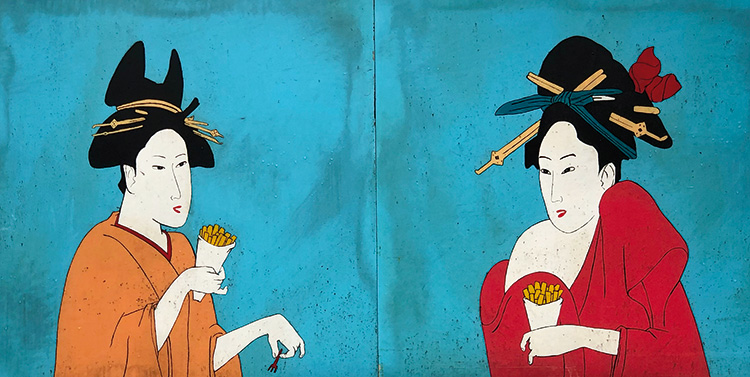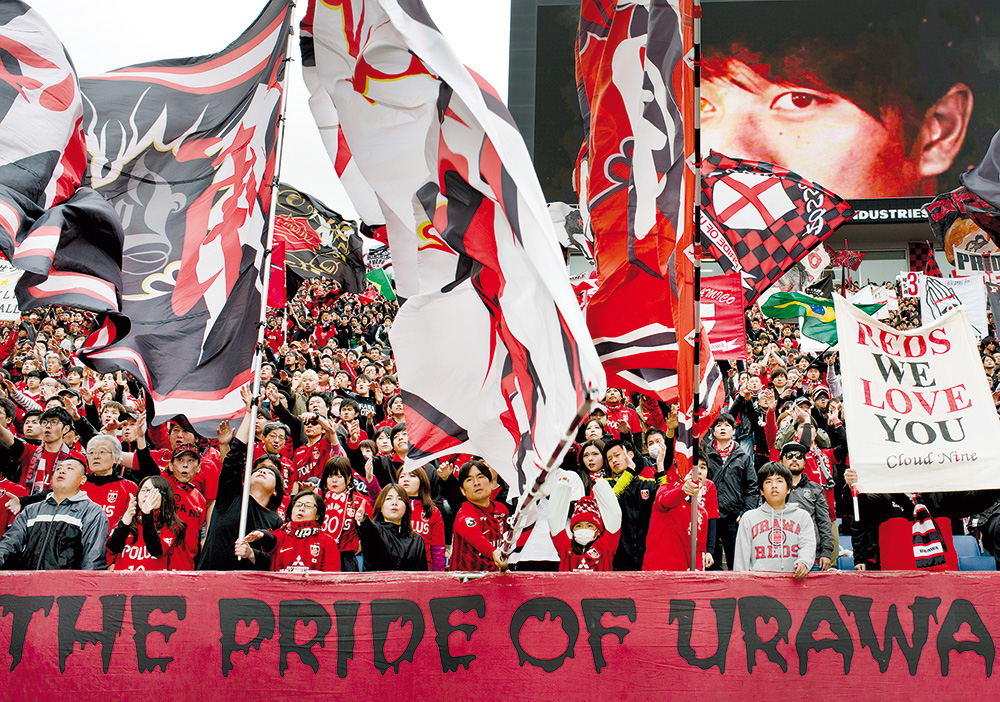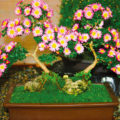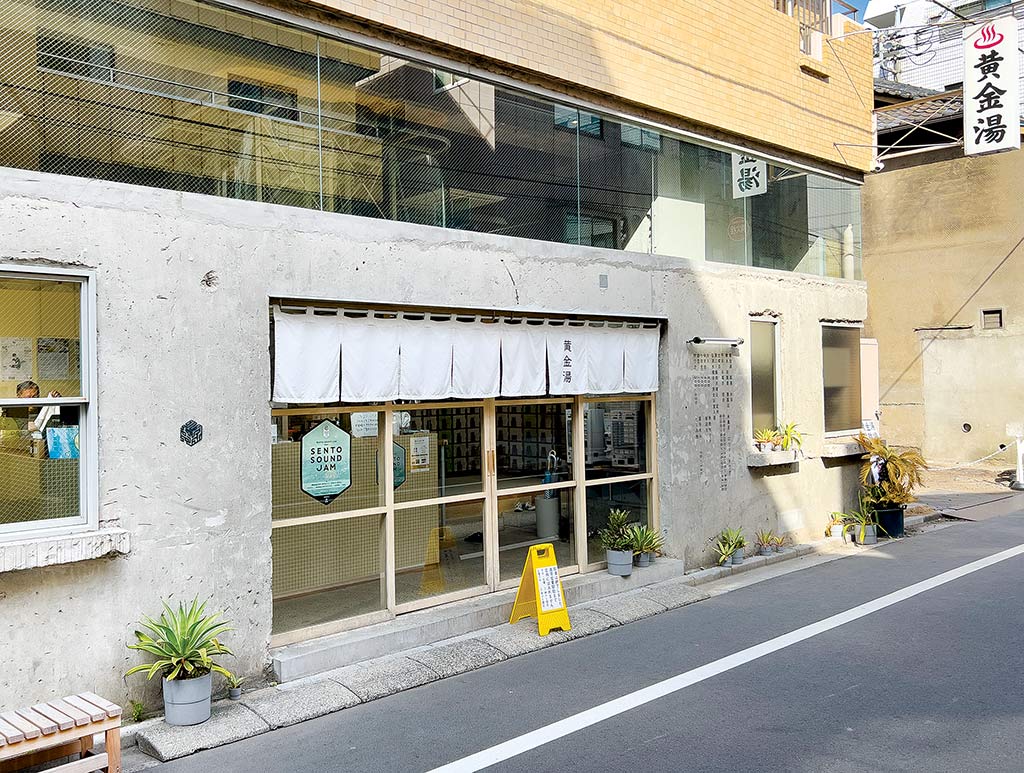

Under Shinbo Takuya’s management, Kogane-yu is reviving an activity that is in decline.
Going to a sento (public bathhouse) used to be a common, everyday thing for most people in Japan when few houses had a bathroom. Now, of course, the situation is completely different and these places are fast disappearing. In Tokyo, for instance, they peaked at 2,600 in 1968. In 1975, they were down to 2,500, then 1,400 in 2000, and currently there are only 500 left, concentrated in traditional working-class districts. Today, I am paying a visit to one such establishment, Kogane-yu, which has recently grabbed the media’s attention for being an example of a new-generation sento.
Sumida-ku, where Kogane-yu is located, is a town of craftsmen and small factories with strong connections to traditional Edo culture. Indeed, not far from Kogane-yu stand the Hokusai Museum, the Edo-Tokyo Museum and the Ryogoku Kokugikan (national sumo arena). So you can imagine my surprise when I turn a corner and I am welcomed by a modern-looking six-storey building from which emerge some mellow dance beats. For a moment I fear I have got the wrong address. Then I realise that the music is coming out of Kogane-yu. “Today we are having a DJ event,” I am told by Shinbo Takuya, the third-generation owner.
The music is only one of the many things that make Kogane-yu different. For one thing, the typical sento’s old, musty image gives way to an exposed concrete structure and an open-plan lobby in the middle of which, like an island, stands a front desk that seems more fitting for a bar. My first impression is actually not far from the truth because the guy behind the counter both serves drinks (Kogane-yu’s original craft beer and homemade non-alcoholic drinks) and mans the DJ booth.
The new-look Kogane-yu is a far cry from its past incarnations. The original sento was opened at least 90 years ago. “That’s the date of the oldest photo we have,” Shinbo says, “but it may have been around since the Taisho period (1912-1926).” Then, in 1985, the old structure became the current apartment building. “After 35 years, due to its bad state of deterioration, we decided that the time had come for some largescale renovation,” Shinbo says, “and we managed to raise funds through crowdfunding.”
Architect Nagasaka Jo and his Schemata Architects studio, who were in charge of the renovation, incorporated contemporary design details while staying faithful to the original spirit of the bathhouse, and it shows in the lobby where the stark concrete walls are nicely offset by the old-style wooden lockers.
Next, I check out the bathing area. The noren (traditional fabric curtain) that divides the male and female changing rooms features a single hiragana (phonetic lettering system) syllable, which reads ‘o’ on the male side and ‘i’ on the female one. Together, they spell “Oi!” (Hey!) in homage to the way that men and women used to call to each other across the dividing wall in the old days. There is also a single handrail along the wall going from one side to the other. “By holding on to the same handrail,” Shinbo says, “our customers, while unable to see one another, can in a sense keep in touch with each other.”
The interior of the bathroom, simple but stylish, features small beige tiles as a unifying motif. “Schemata Architects chose this colour because it is warm, bright and works well everywhere,” Shinbo says, “while the small square porcelain tiles are easy to clean, and the mortar around the edges helps make them less slippery underfoot.” The final touch, of course, is the painted mural which traditionally adorns every sento, though in this case it only takes up the upper portion of the wall and, in a further nod to modernity, was created by manga artist Hoshi Yoriko. In contrast to the bold, garishly coloured work I am used to, this one features a small black-ink Mount Fuji and line drawings of common life in Edo: people working, playing and bathing.
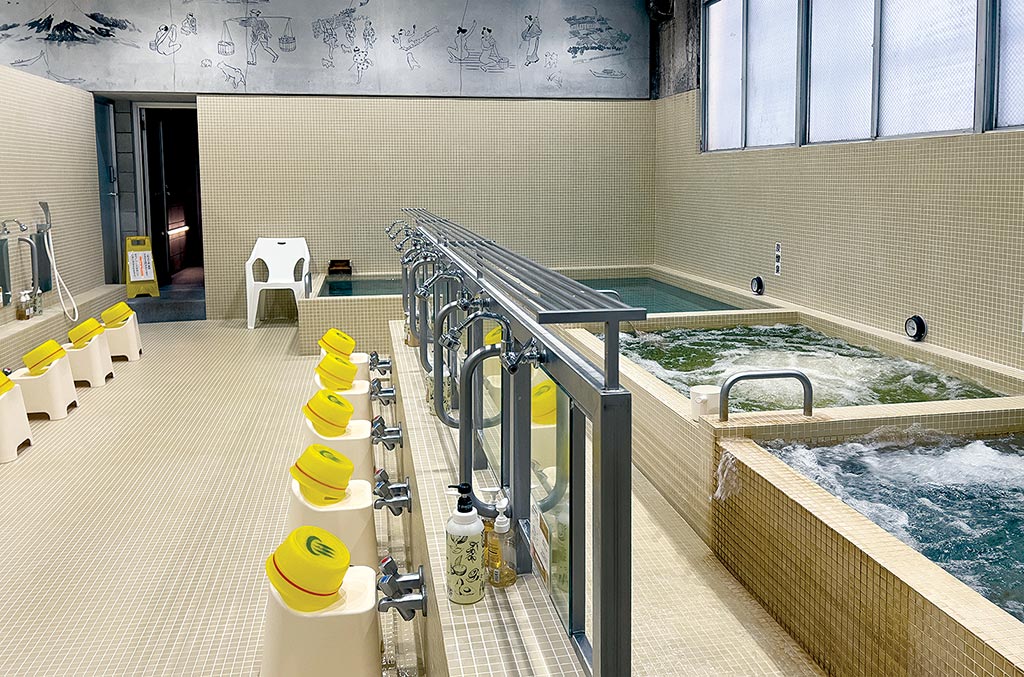
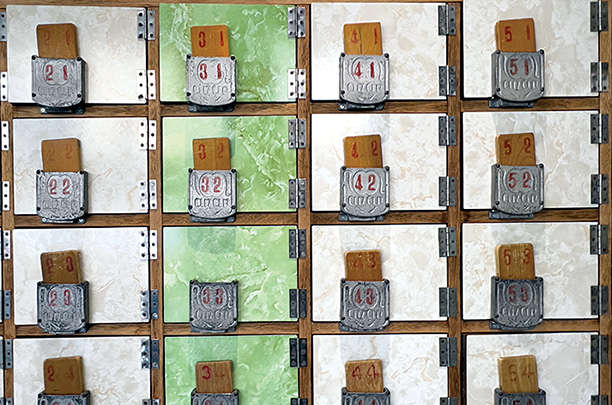
The insides of the heated baths are made from Towada stone, which looks blue-green when it is wet. “It makes the water look blue and clean,” Shinbo says. “Towada stone is a popular material for onsen (hot springs) but it is rarely used in this kind of local bathhouse.”
At Kogane-yu, soft water pumped up from underground also passes through a water softener, giving it a mellow texture. There are four types of baths: a hot bath (43-44°C), a medicinal bath (40°C), a carbonated bath (36°C), and a cold bath (18-20°C). I am curious about the carbonated bath, which I have never heard of. “It is water with a high concentration of carbon dioxide,” Shinbo says. “It increases the blood flow in your body and as such, it is effective for high blood pressure, insomnia, joint pain and fatigue. When you bathe in carbonated water, fine bubbles adhere to the skin surface, making you feel like you are in a fizzy drink or champagne. Even lukewarm water feels about 2-3 degrees warmer than its actual temperature.”
We proceed to the back of the building where I find a special sauna room, a large pool and an open-air resting space. The concrete in this area is a darker colour and grips your feet better, giving the impression that they are being lightly massaged. “The sauna can accommodate 12 people,” Shinbo says, “but it is so popular that there may be a wait on Saturdays and Sundays. Cypress wood grown in Japan is used for the wooden part while the walls are made of maifan stone, which is a good heat reflector. When you leave the sauna room, you can plunge into the pool, which is 90 cm deep and whose water has a temperature of 15°C. By alternating different temperatures, you achieve greater blood flow and your body is refreshed and your fatigue is relieved. Then go outside and relax while looking up at the sky.”
Up to this point, Kogane-yu looks like a stylish but fairly typical sento. The real surprises, however, can be found on the second floor. First of all, the Shinbos have created a dormitory-style accommodation space with both Japanese-style (futon and tatami mats) and Western-style rooms, which come with a small desk. One of the main attractions of spending the night at Kogane-yu is that the bathing area and the sauna can be used at any time during the sento business hours. Right now, they only have eight rooms (four each), but having seen how popular they are, they now plan to turn even the upper floors into hotel-style accommodation.
On the same floor, there is also a kitchen where popular dishes such as lamb keema curry and lamb burgers (“lamb meat is said to keep your body cool,” Shinbo says) are available. Besides dining, the multi-purpose lounge space can be used for events and exhibitions.
Kogane-yu has changed a lot over the years. They used to heat the baths with wood fires, but now they use gas and electricity instead. However, you will still find their tall chimney rising up from the back of the building. “They’re no longer necessary,” Shinbo says, “but many keep them because they are easy to see from a distance, and they’re also a symbol of the bathhouse.”
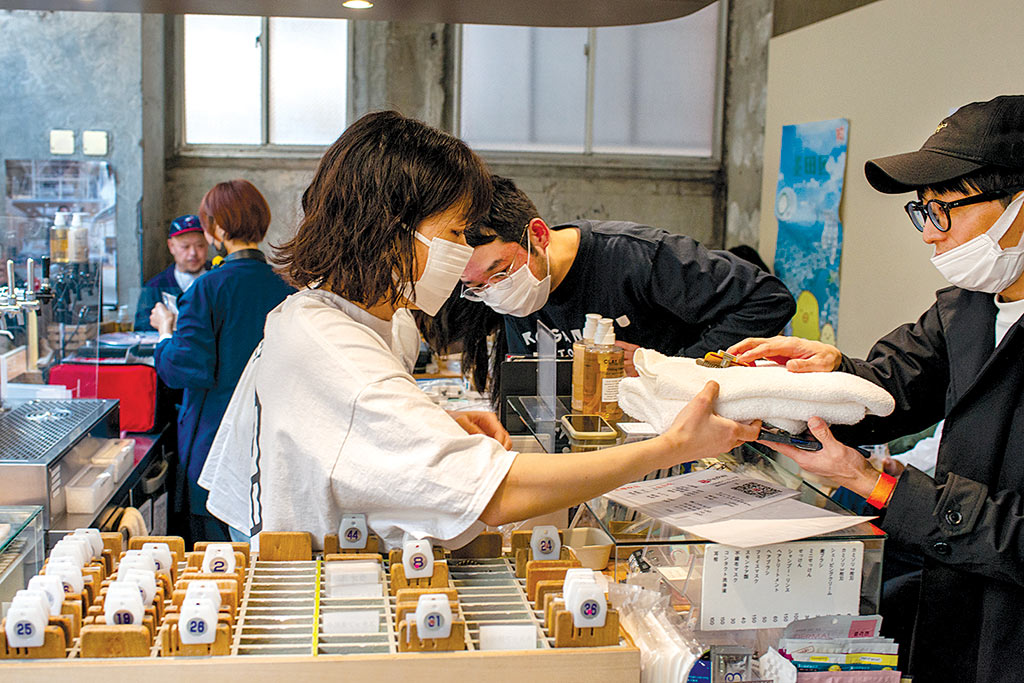
While I was touring the premises, a long queue of people formed in front of the sento. They are all in their 20s and early 30s and are waiting for the 3:00 pm opening time. Kogane-yu’s future may be rosy, but Shinbo assures me that managing a public bathhouse is far from easy, particularly now. “We replaced the boiler two years ago and the new one has good fuel efficiency,” he says. “But even so, recent developments in the global economy have had a direct impact on us. After all, our business is based on boiling water, and electricity and fuel costs have soared due to rising global energy demand and the economic impact of the Covid-19 pandemic. Then, Russia’s invasion of Ukraine and the depreciation of the yen accelerated the rise in prices.” According to Shinbo, fuel costs have doubled since last year and now run into hundreds of thousands of yen. The problem is compounded by the fact that bathing fees are capped by prefectures under a law known as the Price Control Ordinance, and the sento owners cannot raise them at their own discretion. In Tokyo, for instance, the Metropolitan Government has set a flat fee of 500 yen*. Granted, in Tokyo, some local wards recognise the sento’s social and cultural value as meeting places and independently subsidise running costs. Also, the Tokyo Metropolitan Government has established measures to exempt or reduce water charges for businesses operating public bathhouses. As a result, virtually no water bills are required. “However,” Shinbo points out, “we have to shoulder 100% of our fuel costs.
Kogane-yu has changed a lot over the years. They used to heat the baths with wood fires, but now they use gas and electricity instead. However, you will still find their tall chimney rising up from the back of the building. “They’re no longer necessary,” Shinbo says, “but many keep them because they are easy to see from a distance, and they’re also a symbol of the bathhouse.”
While I was touring the premises, a long queue of people formed in front of the sento. They are all in their 20s and early 30s and are waiting for the 3:00 pm opening time. Kogane-yu’s future may be rosy, but Shinbo assures me that managing a public bathhouse is far from easy, particularly now. “We replaced the boiler two years ago and the new one has good fuel efficiency,” he says. “But even so, recent developments in the global economy have had a direct impact on us. After all, our business is based on boiling water, and electricity and fuel costs have soared due to rising global energy demand and the economic impact of the Covid-19 pandemic. Then, Russia’s invasion of Ukraine and the depreciation of the yen accelerated the rise in prices.” According to Shinbo, fuel costs have doubled since last year and now run into hundreds of thousands of yen. The problem is compounded by the fact that bathing fees are capped by prefectures under a law known as the Price Control Ordinance, and the sento owners cannot raise them at their own discretion. In Tokyo, for instance, the Metropolitan Government has set a flat fee of 500 yen*. Granted, in Tokyo, some local wards recognise the sento’s social and cultural value as meeting places and independently subsidise running costs. Also, the Tokyo Metropolitan Government has established measures to exempt or reduce water charges for businesses operating public bathhouses. As a result, virtually no water bills are required. “However,” Shinbo points out, “we have to shoulder 100% of our fuel costs.
“These problems can only be overcome by thinking out of the box,” he adds. That is why the Shinbos keep coming up with novel ideas, like using chocolate-scented water on Valentine’s Day. A major change in Kogane-yu’s management was opening in the morning from 6:00 am to 9:00 am. The “morning bath” was born out of necessity during the pandemic, but it has turned into a major attraction for people for whom taking a bath in the morning feels like a luxury. The ever-popular sauna and the accommodation service, on the other hand, were added as a new source of income and have the advantage that, in contrast to the bathing fee, the owner is free to decide how much they want to charge for them. The Shinbos also understand the value of collaborating with other companies and creaters of every kind. Kogane-yu’s brand-new logo, for instance, was created by Takahashi Hiroko, a fashion designer whose studio is located just a ten-minute walk from the sento. Also, for several weeks between February and March, their customers were able to use natural shampoo and hair masks made by Clay Esthetic, which are usually available only at beauty salons. They even went so far as to give away free samples to those who posted photos of the facility on Instagram during that period.
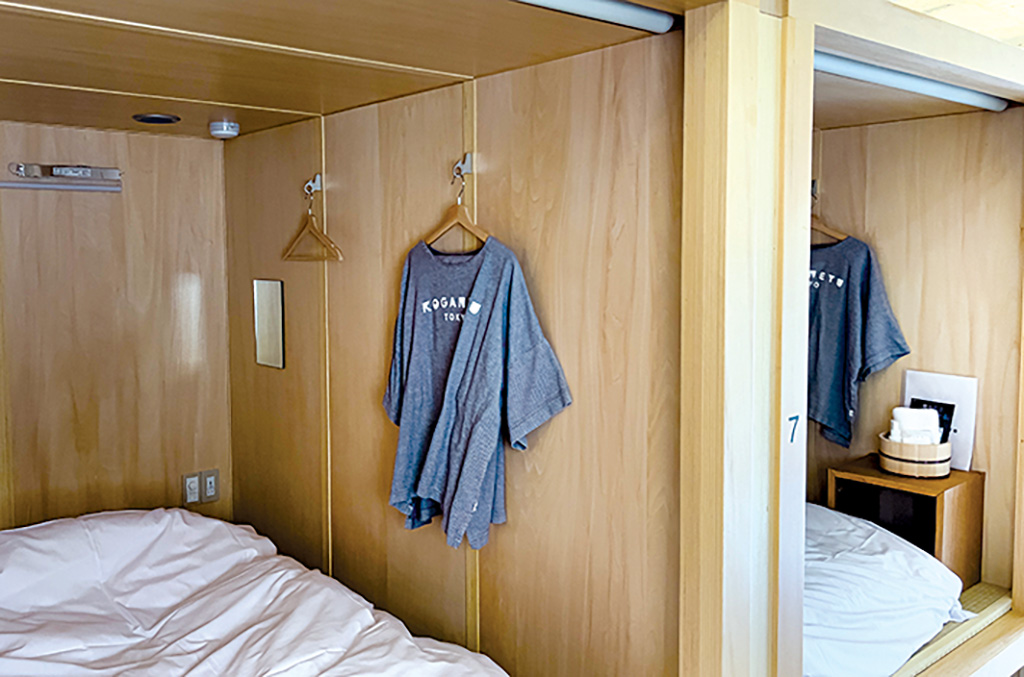
Last but not least, Kogane-yu is part of the still small but growing number of sento that do not have any rules against tattoos, so inked bathers are welcome too.
They say that the best defence is a good offence, and the Shinbos, instead of worrying about the shrinking market, are expanding their reach: in February, in fact, they took over an old sento in Shinjuku. That will be their fourth public bathhouse: besides Kogane-yu, which is run by Shinbo’s wife, Tomoko, they own the more traditional 74-year-old Daikoku-yu, and Sakura- yu, also in Sumida Ward.
“By coming up with a different concept for each place, we’re able to appeal to different people,” Shinbo says. “Daikoku-yu is very much your old-style sento and is frequented by people of all ages, from little kids to old people who have lived here all their lives. Kogane-yu has a hippier look and definitely attracts a younger clientele, but local elderly people still come here, and I love to see how they interact with the youngsters.”
Shinbo confesses that though he grew up in the sento world, initially he developed different interests. “When I was in my twenties, I had no intention of taking over our public bathhouses, so I opened my own company, a second-hand shop,” he says. However, having a chance to observe from the outside in, he later began to appreciate what his family had been doing for so long, and eventually decided to join them while at the same time trying to breathe new life into a struggling business model. Kogane-yu, in a sense, is the crowning achievement of that process.
In the end, Shinbo likes to call Kogane-yu a “glocal sento”: a local establishment with a global reach. “By updating a traditional idea and renovating Kogane-yu, we want to create a new style of sento for the coming age, which can be enjoyed not only by the locals but also by everyone who loves public bathhouses as well as those who are still unfamiliar with them. In this way, we want to pass on the unique Japanese sento culture to future generations.”
Gianni Simone
Practical information
Take the north exit of JR Kinshicho station and walk along Yotsume Street for 6 minutes. After crossing Kuramaebashi-dori and turning right at the third passageway, you will find Kogane-yu.
Opening times: 6:00 am to 9:00 am and 11:00 am to 12:30 am (Saturday 6:00 am to 9:00 am and 3:00 pm to 12:30 am). Closed 2nd and 3rd Monday of the month. Cost: Adult: 500 yen*, secondary school pupil: 400 yen*, primary school pupil: 200 yen*, child: 100 yen*. Extras: Sauna (weekdays, 2-hour session) women +300 yen*, men +500 yen*. (Saturday and Sunday, 2-hour session) women +350 yen*, men +550 yen*.
Towel hire: +200 yen*. Room: 5,800 yen* per night. *100 yen = approx. £0.60 (April 2023)

